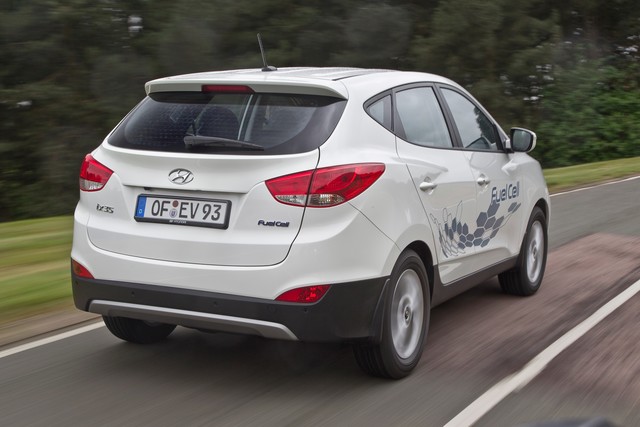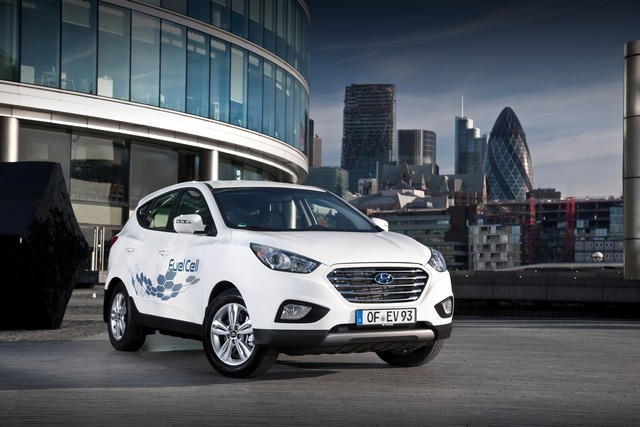If you weren't aware that it is so much more, you might think that the ix35 Fuel Cell was simply an all-electric version of Hyundai's crossover. There's more to it than that, though, and the clue is in the title.
A fuel cell is a device which takes in hydrogen, creates a chemical reaction with air and produces electricity and a small amount of water. In this case it's mounted under the ix35's bonnet, close to the motor.
The hydrogen comes from a tank mounted at the rear. There is no battery pack. The basic luggage capacity is unaffected, though there's no room for an underfloor storage compartment and certainly none for a spare wheel.
The arrangement has its disadvantages. Most pressingly, it relies on the owner having easy access to hydrogen, and most people in this country don't. The infrastructure, though improving, is still quite inadequate.
But let's assume this infrastructure will improve over time. Why is a car with a fuel cell better than one with a battery? Because filling the tank with hydrogen, if you can get any, costs about a fiver and takes two minutes.

That’s barely enough time even to order the coffee you might as well relax over while you're waiting for a battery to be re-juiced even on a fast charge. You'll then be able to travel much further without repeating the process than you would in any battery car presently on sale.
While this Hyundai ix35 is not an all-electric car, it certainly drives like one. Press the accelerator and off you go, in almost total silence. Some people think electric vehicles make no noise, but they actually do, some more than others. The ix35 Fuel Cell is quieter than most of them.
Low-speed manoeuvres are typical, which is to say that they're easier than in a car with an internal combustion engine, even if it also has automatic transmission. Choosing the precise amount of power you want in mid-corner is easier too. The ix35 Fuel Cell rides very smoothly, and although it's obviously no sports car it goes through the bends well enough.
The motor has a maximum power output of 134bhp, which is some way short of enough to make this a quick car. Still, it should be able to keep up with a modestly driven petrol or diesel version in everyday motoring.

How far you can travel in the ix35 Fuel Cell will vary according to how, where and in what conditions you drive, of course, but Hyundai reckons 369 miles. Even 300 would be good.
It's just a shame that sourcing the fuel is so difficult, and that the technology is at this point so expensive. Hyundai has not yet confirmed a price for the ix35 Fuel Cell, and at the time of writing won't even speculate because there are still so many variables to consider. It probably won't be less than £50,000, though, which is a lot for a car that will be left stranded if you drive it too far from one of the country's very few hydrogen oulets.
You're probably not going to buy one, because hardly anyone will, but if Hyundai and all the other parties involved keep on with what they're doing, something similar may eventually appear on your list of possible car purchases. And if the ix35 Fuel Cell is anything to go by, that will be a happy day indeed.



